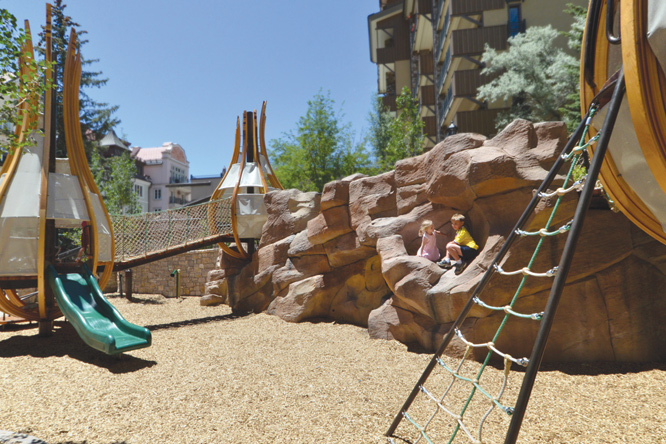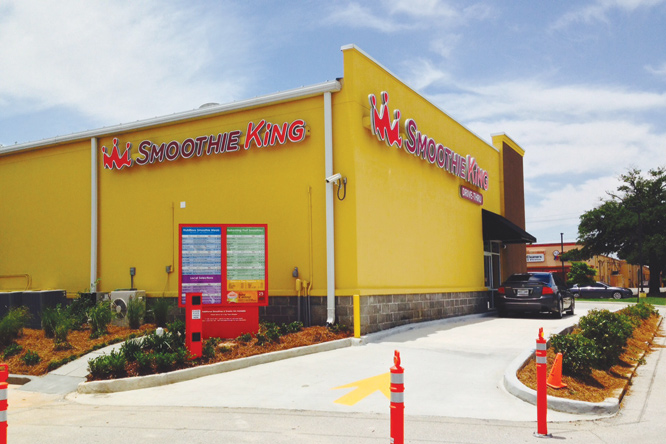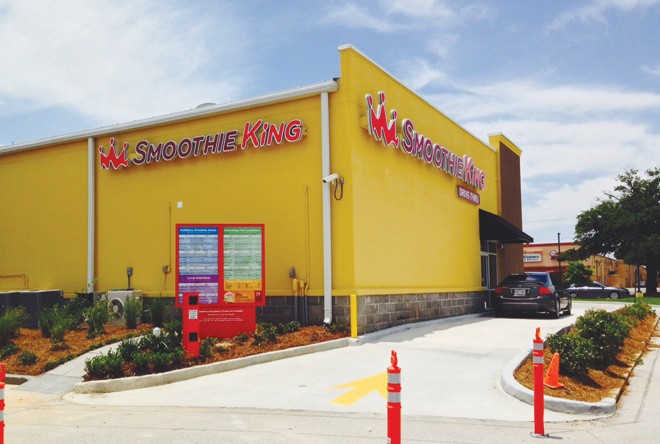Part three: Industrial Manufacturing
By Adam Broderick
Editor’s note: It’s not easy making ends meet in mountain communities that rely heavily on cooperative weather and seasonal tourism. In this winter series, reporter Adam Broderick explores different experiences of business owners who live and work in the Gunnison Valley, yet whose work is mostly seen and sold elsewhere.
The pristine backcountry, the stillness in the valley, and the family-oriented community. These are the underlying reasons most people choose to live here. So when a local company grows and the opportunity to leave this place for somewhere more conducive to expansion arises, what stops motivated businesspeople from hitting the road? It seems those same factors apply.
In discussing outbound business with local professionals, some ups and downs of operating a company locally have been revealed. This week we speak with two manufacturers who fabricate industrial products before shipping them out of the valley. As with anyone featured in this series, they live here because this is where their hearts are and they’ve chosen to deal with any issues that come as part of that package deal.
Andris Zobs, ID Sculpture
Some people never let go of their obsessions with playgrounds. These recreational areas are fun when we’re kids and can still be captivating as we age, as long as they get progressively more technical or subjective.

Take a climbing wall, for example. It’s essentially a playground for both adults and kids. As the guys at ID Sculpture (IDS) know, it takes being a parent or somebody who watches kids play to really know how to make the ultimate playground. Most of the staff at IDS have kids and want to create playground sculptures that inspire imagination and leave the canvas, if you will, open as to how kids can play on them.
Along with the creation of new safety regulations in past years, the team at IDS feels the playground industry has become standardized. A slide is just a slide, and activities have become programmed. ID Sculpture is trying to break away from that paradigm. They believe conventional playgrounds are too easy to navigate and that art and playgrounds should coexist so that a piece of art can also be something to play on.
Andris Zobs is director of operations and business development at IDS, formerly known as Integrated Design Solutions and founded by cutting-edge rock climber Ian Glas. In 2009, Glas was focused on climbing the world’s toughest routes and in the off-seasons he molded climbing holds for various clients. He founded IDS in 2009. In 2012 he partnered with Zobs, who was an architectural designer before he was director at the Office for Resource Efficiency (ORE). Zobs is still on the ORE board of directors but his full-time gig involves creating art with a playful purpose, and vice versa.
IDS began as a climbing feature fabrication company with just a few climbers and designers, but soon evolved into a major manufacturer of sculptural concrete playground equipment, public art and exhibits. When Glas started the business, climbing walls were mostly made of steel and plywood and cement coatings were rare. He wanted to add a new level of realism and creativity to artificial rocks, so along came IDS.
The company now has 13 employees and does everything from designing to manufacturing to shipping from a Gunnison warehouse. Glas is CEO and lives in Gunnison. Zobs and several employees live in Crested Butte and make the daily commute.
Zobs’ work in sustainability has encouraged him to use 100 percent recyclable materials and to recycle all waste. All steel fabrication is done in-house. The concrete mix IDS incorporates into playgrounds and climbing structures to “a sculptable cementitious coating that can be applied to a contoured structural armature” was an expensive investment to develop but is now ideal for playing and climbing.
Together the team digitized the process of designing projects with computer aided drafting and manufacturing (CAD/CAM), “and now we have really cool digital sculpting tools,” Zobs says. They use 3D scanners and printers.
Zobs feels they really excel when they get to work with landscape architects to make custom sculptures. IDS operates on the belief that every project should be designed with place in mind and that everything they build should be timeless, in terms of both design and durability.
They designed and built the climbing boulder you’ve probably seen at Rainbow Park, but Zobs says that’s an old project and not a great example of their best work. IDS has constantly invested in the quality of their product, working with concrete mix design consultants and engineers.
Their ability to do custom work lets them localize projects, like the flour silo sculpture they just designed for a place in Utah that is known for a historic flour mill. Or if they were asked to build a 10-foot-tall, 20-foot-long climbable Brontosaurus and ship it to a school in Missouri, they could make that happen. If they were asked to replicate a natural climbing wall in Utah with identical holds, cracks, and overhangs, and set it up in Chattanooga, Tenn., they could do that, too.
IDS recently built a playground at a large public park in Salt Lake City. It’s over 350 feet long and features climbable caves and waterfalls, and utilizes more than 600 unique, prefabricated parts. Shipping the parts from Gunnison and installing it had IDS employees in Utah for almost three months. Zobs says they send a lot of oversized loads out of town, often as a caravan of flatbed trailers loaded with freshly carved sculptures.
Some local businesses might argue that shipping costs hinder business around these parts, but Zobs says that when your products are as unique as IDS makes them, the shipping costs are a small part of the equation.
The company continues to grow because of their ability to customize sculptures and deliver them, as well as the quality of products they export. Currently, about 80 percent of projects are playground-related and 20 percent are exhibits and public art sculptures.
If you were to travel the world in search of awesome playgrounds, you would find IDS products in 22 U.S. states, Canada, and beyond. They’re even in Dubai. Locally, the climbing wall at the Gunnison Community Center was an IDS project. So were the playground at the Gunnison Middle School and the boulder at Legion Park in Crested Butte South. IDS recently donated a piece to Stepping Stones Children’s Center here in town.
Zobs hopes to see IDS grow in size and efficiency in the near future, and to be able to manage growth while maintaining the quality of products and the company’s creative niche in the market.
But he finds some obstacles to doing business in the Gunnison Valley, like finding and retaining skilled, dependable employees. He also thinks improving affordable housing options and diversifying the economy to incorporate more people actually making products in the area to will help improve business here. “Better flights and Internet would be great as well,” he adds. “But while there are challenges to locating our business here, they are not insurmountable, so why wouldn’t we live here?”
Zobs explains that Glas started the business here because he wanted to be here. “We want to be here,” he says. “We don’t feel constrained by the region. We like the Gunnison Valley because it’s quiet and family oriented. [The Gunnison Valley] needs to make its way through economic developments.”
The Sciortinos, LetterFab
Trea Sciortino found a new love through his involvement with LetterFab, the wholesale manufacturer of aluminum-fabricated, LED illuminated channel letters (three dimensional letters you see on many building exteriors, especially in big cities) based in the Riverland Industrial Park a few miles south of Crested Butte. He fell in love with metalworking, metal art, and blacksmithing, and says he’ll live the rest of his life thanking his company for introducing him to a diverse platform for art. Prior to starting LetterFab from scratch in 2007, he was in construction and carpentry and has always had a passion for arts and crafts.

Warren Sciortino, Trea’s father and the man behind the LetterFab idea, was selling signs in Louisiana for a different sign company before pitching the business idea to his son. Channel letters have been a staple to American signage since the ‘50s, and since LED entered the industry in 2005, prices have dropped significantly. Now LetterFab has endless opportunities in the sign industry. They’ve done 100-foot tall pylon signs; they made a large sign for the basketball stadium in Madison Square Garden; they did the Capital One letters for the Orange Bowl; they work in every state, including Hawaii, and have signs in Canada, the Caribbean, and the Cayman Islands.
LetterFab creates custom illuminated metal signs and other custom sign projects, but Trea says LED illuminated channel letters are their bread and butter. They’ll occasionally consider a local project, like the sign for Montanya Distillers, but LetterFab caters best to big businesses and franchises that need the same sign multiple times.
continued on next page
continued from previous page
LetterFab has 15 people on staff, including Trea and Warren. Trea manages operations while Warren is in charge of sales. The two use their combined knowledge of the sign industry to put projects together. Once Warren sells a project, their crew uses large bending machines to make the letters A-Z out of aluminum. Then they chemically weld what’s called a trim cap, which is basically like a Tupperware lid for the letter bases. Finally, LEDs are installed in the letters, which illuminate the letters against a night sky. The letters are then shipped across, or out of, the country on freight trucks.
Trea says freight options have improved the past eight years he and his father have been in business, which has made it easier to get products out of the valley. He explained that it used to be just FedEx and sporadically other companies, but companies like SAIA and Conway have stepped up their game to compete with FedEx and he’s now happy with all three of those freight providers.
“We’re doing this in the middle of nowhere specifically so we can live in the mountains. We deal with deep snow, a remote location, and everything ships out of here.
“That has been our biggest challenge, along with finding good employees. You know as well as I do that nobody moves out here to work 40-hour weeks,” Trea tells me. “I’m here to not be involved in the rat race. It’s mountains and our lifestyle up here long before channel letters and success in business.”
It’s more expensive for LetterFab to operate here than it would be in a city like Grand Junction or Denver, so the Sciortinos must focus on being efficient and streamlining production. Since all sign materials are incoming and outgoing, getting them in and out of the valley is a major hurdle. Manufacturing in the middle of nowhere is difficult, but Trea says they do it because when they finally get some time off they can enjoy the surrounding mountains and push the reset button. The mountains are precious to the Sciortinos. According to Trea, “This place is gorgeous, with gravity.”
Trea moved here in 1997 to pursue big-mountain snowboarding. He built his home on one of the first deed-restricted lots on the Verzuh Annexation in 2002 and has made all the money he can account for in the Upper Gunnison Valley. He says it’s been a long journey since his 20s, and it hasn’t been easy.
Warren moved here after his son. He was living vicariously through Trea, always asking about his snowboarding and mountain biking adventures. Warren fell in love with Aspen in the 1970s and had always dreamed of living in Colorado, and starting LetterFab enabled him to finally move away from New Orleans, where he’d spent almost 60 years. It was the only way he could move to a place like this and make a living. Warren came up with the idea and Trea took the bull by the horns, as he puts it, and set up fabrication in Riverland.
Warren also works with Guest Services and guides snowshoe tours for Crested Butte Mountain Resort. He rides an electric mountain bike during summer, the only way he can climb the trails here and enjoy the downhills without having a heart attack on the way up.
And that’s no joke. He’s had two massive heart attacks, one from which he died and was brought back to life, and has returned to become an Ironman triathlete. He loves talking to people and will spend the better part of a day teaching the ins and outs he’s learned to a person new to signage.
When they think about all the times they’ve put in extra-long hours and wished they could have crawled into an old mine shaft to get away, thinking about playing in the mountains and appreciating real life (which Trea believes lives in the wilderness surrounding Crested Butte) keeps them going strong. Then again, when business slows from time to time, they’re reminded how it feels to barely squeeze by. But they’re aware many local business owners are in similar situations.
“Sometimes there’s a hole to crawl out of if the phone doesn’t ring enough, but we’ve managed to weather the storms. Literally,” Trea jokes.
LetterFab has a fairly new facility in New Orleans, an effort to grow the company through easier means of shipping. But you won’t find either Sciortino moving there to help out. They’ll be busy expanding in Riverland, where fire suppression resources are now up to code with county requirements so LetterFab’s 1,800-square-foot weatherport will be replaced with a 3,250-square-foot building. Trea says this should greatly improve efficiency. He also says keeping the same employees will boost efficiency as each crewmember further masters their trade.
“I have my dream crew right now,” he says. “I have the guys I’ve been looking for for eight years, and I’d like to have the same crew years from now. Then we’ll be even more of a well-oiled machine.”
Thank you for absorbing this three-part feature story on local entrepreneurs working out of this little slice of heaven. After all, it’s the people who bring all the wonderful features of this place together that make it worth sharing. So as we continue on the trail toward each of our own definitions of success, remember to support local business and the people who work hard to stay here. Like each person interviewed for this series knows, it’s not all about the money. It’s about how we earn it and what we do when we focus on the real prize: the place we call home.
 The Crested Butte News Serving the Gunnison Valley since 1999
The Crested Butte News Serving the Gunnison Valley since 1999



